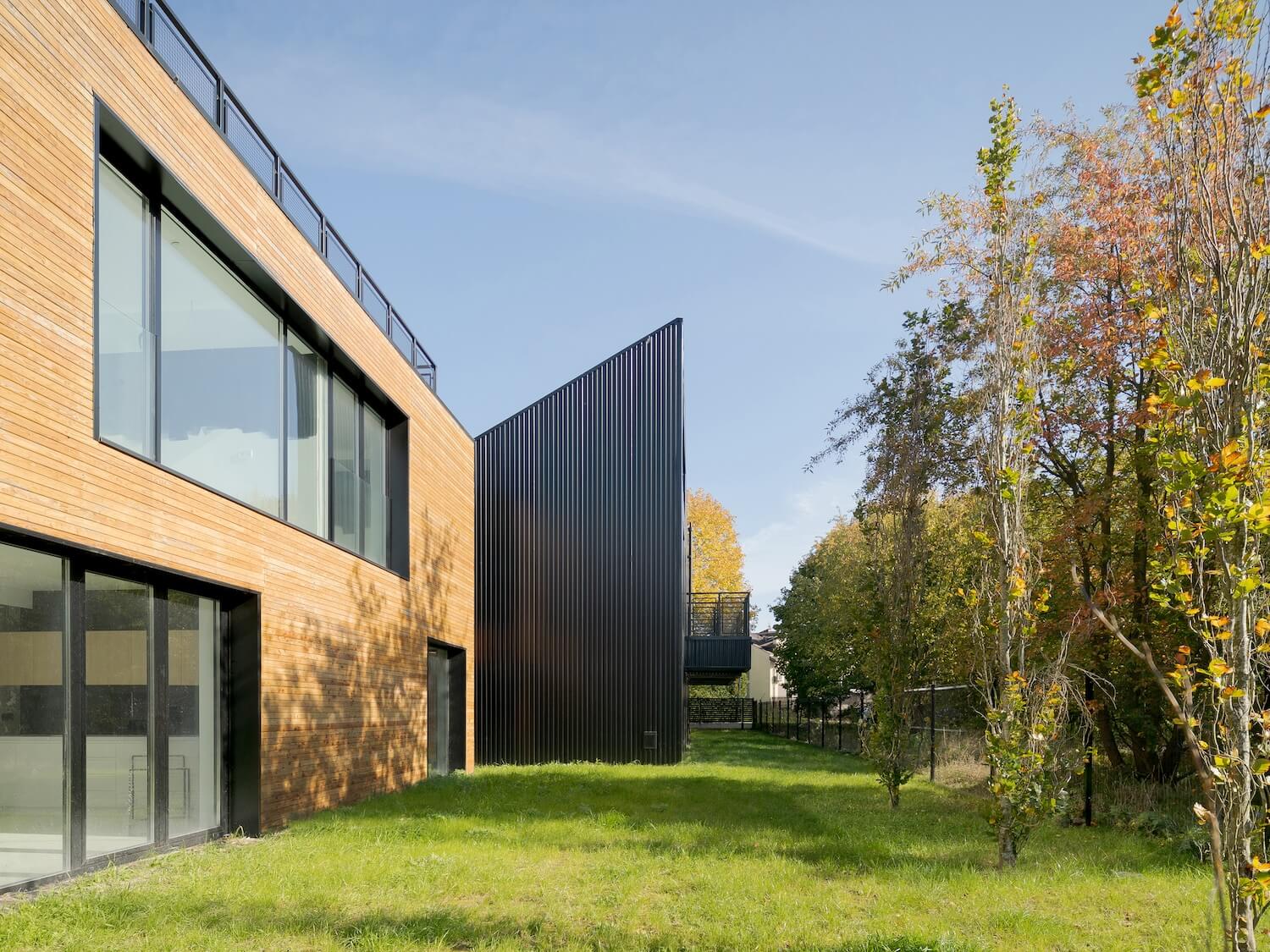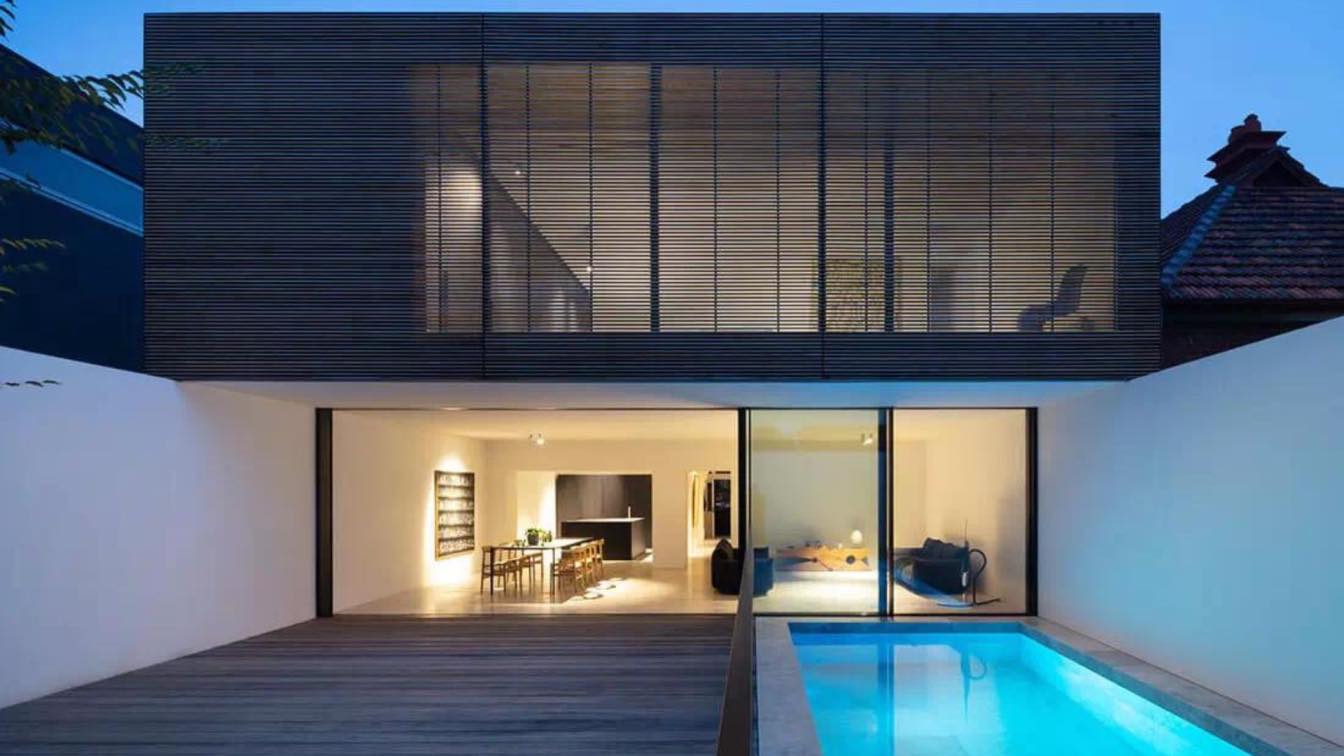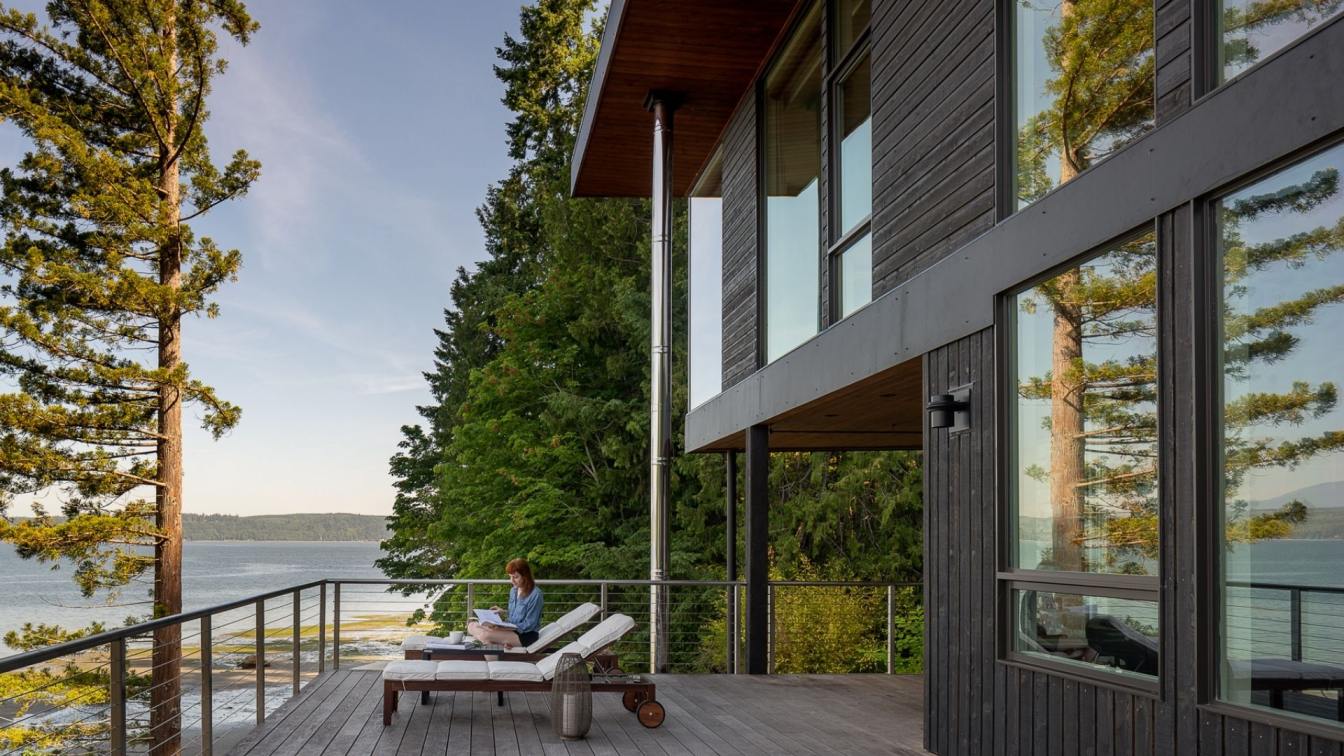Superhelix Pracownia Projektowa - Bartłomiej Drabik: The estate has been designed in the northern part of Krakow near the border with Zielonki. This is a residential area of the city, which keeps growing rapidly in recent years.
The complex consists of four buildings, joined in pairs. Each house is divided into two separate apartments. The division was arranged in such a way that the apartments always had access to either gardens or large terraces. Duplex buildings are not connected in the most common way, which is by the shortest elevation, but by part of the north elevation of one building and part of the south elevation of the other. Such interlocking of buildings increase the privacy of the future residents and creates small courtyards. In addition, thanks to this, the buildings do not have a uniform elevation line, which emphasizes their volume and breaks up the long facade.
Unusually shaped roofs are a characteristic feature of the estate. The local building law specified the rules for shaping roofs in such a way that the ridge must be perpendicular to the front of the plot and the neighboring street. Given the shape of the plot, to maintain a suitable functional layout of the apartments, it was necessary to twist the ridges only and leave the main volume parallel to the boundaries of the property.

The use of renewable energy sources was also an important factor. The twisted ridge resulted in a reduced area suitable for mounting photovoltaic cells, so the southern slope was extended, hanging over the northern elevation to form a sail-like element. The solar sail, because it increases the mounting area of the cells - hence the name of the houses.
The houses were built using technology traditional to the region. Brick walls and reinforced concrete columns and ceilings, wooden roof trusses.
The choice of facade materials highlights the division of the buildings into smaller blocks. Parts with pitched roofs are finished in trapezoidal sheet metal, separated by lower blocks covered in larch wood.































